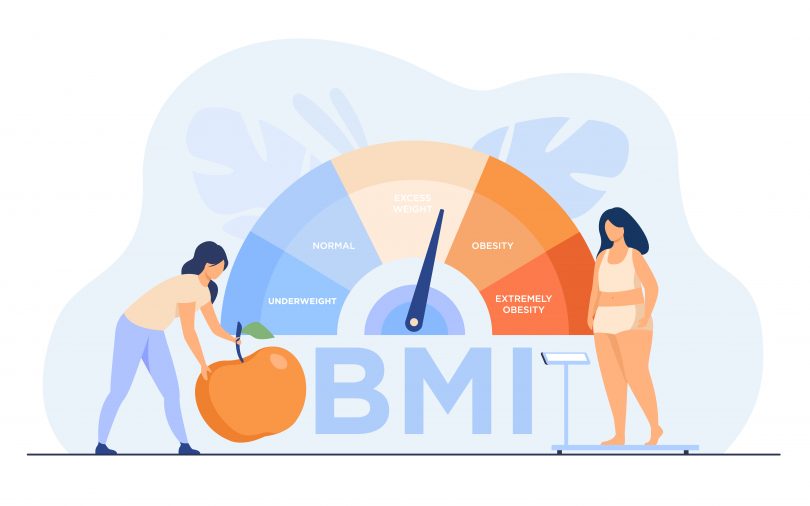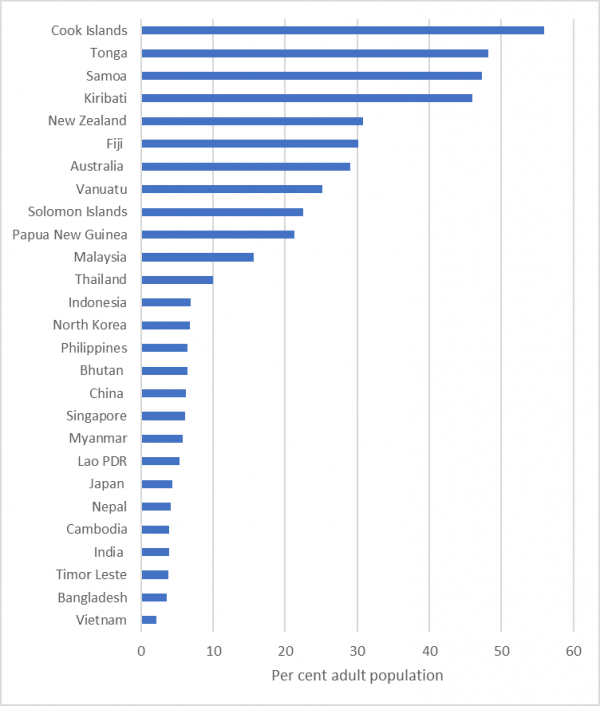Two recent reports have highlighted the damaging interactions between obesity, COVID-19, and development. This blog examines the often worrying implications for countries in Asia and the Pacific.
At the outset, it is worth noting that the World Health Organization defines being “overweight” as having a body mass index (BMI) of 25 or more, and being “obese” as having a BMI of 30 or more. A BMI is calculated as a person’s weight divided by a person’s height, squared. There are many simple and easy-to-use online tools to calculate your BMI including, for example, here.
The first report, the World Bank Group’s Obesity: Health and economic consequences of an impending global challenge, notes that over 70% of overweight and obese adults worldwide live in low- or middle-income countries in 2016 (latest year available). Worldwide, an estimated 44% of adults, or more than 2 billion, are overweight or obese. These conditions are linked to increasing health care costs, disability, and potentially life-long and complex non-communicable diseases such as diabetes, heart disease and cancers.
The second recent report worth noting is the World Obesity Federation’s March 2021 edition of the World Obesity Atlas, which this year focuses on the links between obesity and COVID-19. It provides many examples of how obesity and being overweight increase the risk factors for acquiring COVID-19 but also the intensity (and expense) of then treating obese patients who have the virus. For example, in the UK being significantly obese increases a COVID-19 patient’s risk of admission to intensive care fourfold compared to a person who was not overweight or obese.
The Atlas also shows that obesity is a problem that is particularly severe in our region. Pacific Island countries have the four highest rates of adult obesity in the world (Figure 1). Figure 2 shows the latest estimates for obesity for all the countries in Asia and the Pacific included in the report.
Figure 1: The ten leading countries in the world for obesity
Figure 2: Rates of obesity in Asia and the Pacific
The World Bank report notes that many low- and middle-income countries also face a double burden of malnutrition coexisting with obesity. Significantly, it estimates that only eight countries in the world have a “very high” double burden, but two of them – Papua New Guinea (PNG) and Solomon Islands – are in the Pacific. (The others are Botswana, Cameroon, Djibouti, Guatemala, Lesotho and Yemen.) Almost half (49.5%) of children under 5 years old in PNG are estimated to be stunted (short height for age) while almost 60% of women are overweight or obese.
As can be seen in Table 1 below, four countries in the Asia-Pacific also have a “high” level of double burden. In populous Indonesia, more than one-third (36.4%) of children are stunted and nearly one-third (32.3%) of adult women are overweight or obese. Nauru, North Korea and Vanuatu are also classified as having a “high” double burden.
Table 1: The extent of a double burden of malnutrition and overweight/obesity in the East Asia and Pacific region
Clearly, obesity is an issue for the whole world, but it is especially one for the Asia-Pacific, and especially now with COVID-19. The final word comes from the 2021 World Obesity Atlas which concludes that being overweight or obese is a gateway to many other non-communicable diseases and mental-health illness and is now a major factor in COVID-19 complications and mortality. There is a window of opportunity to advocate for, fund and implement these actions in all countries to ensure better, more resilient and sustainable health for all, now and in our post-COVID-19 future.






Leave a Comment